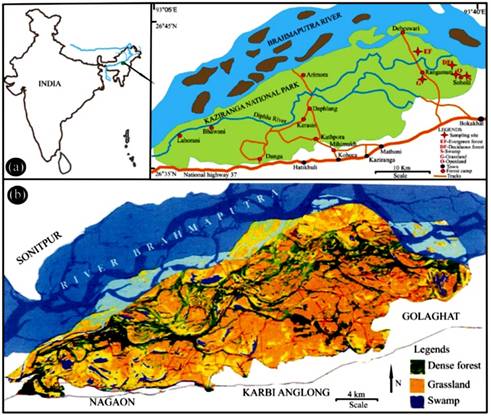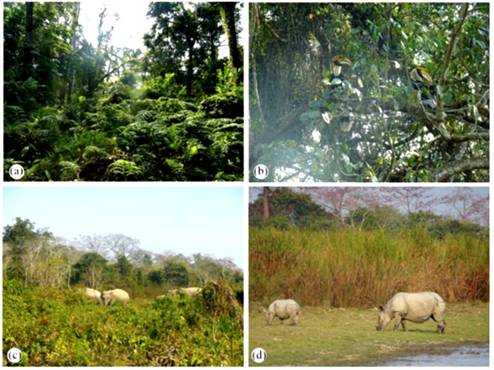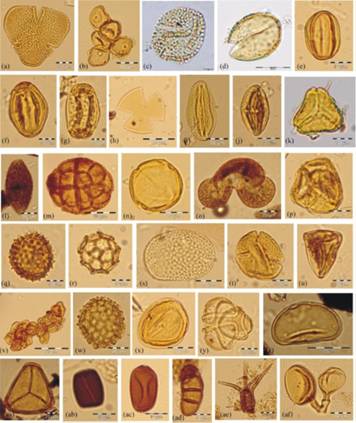Delhi, 24 FEB 2024
New research has developed a modern analogue for pollen and non-pollen palynomorphs (NPPs) of Kaziranga National Park that can help in the interpretation of the past vegetation and climate in a region.
Climate change is a dynamic process for the periodic vegetation shifts in a region. Nevertheless, the national parks are highly protected areas for the biodiversity conservation. The extreme and unpredictable weather, and an increase in the frequency and intensity of natural disasters, is one of the prime drivers for the biodiversity loss in National Parks. In these circumstances, the precision in future climatic assessment is important and requires rigorous climate models which are built utilizing modern and past climatic data inputs which emerged from well-dated proxy based palaeo-reconstructions. The Kaziranga National Park (KNP) in Assam, a corridor for immigration of members of the Indo-Malayan fauna into the Indian sub-region, is a critical reserve for tropical species, having served as a gene reservoir for these taxa during glacial periods.
With this in mind scientists from Birbal Sahni Institute of Palaeosciences (BSIP), an autonomous institution of DST have developed a modern analogue dataset based on pollen and non-pollen palynomorphs (NPPs) from different vegetation settings across the Kaziranga National Park of Assam for the interpretation of the past vegetation and climate in a region. This study evaluates both the strength and weaknesses of the biotic proxy and assesses how reliably modern pollen and NPP analogue can identify different ecological environments and could be used as a baseline in interpreting Late Quaternary palaeo-environmental and ecological changes more accurately in this region.
Modern pollen analogue being a prerequisite in this high precipitation tropical region for deciphering the past and future climatic scenario, the palaeo-ecological data would assist in better understanding the sustainable future projections in and around the national park.
Compared to single-proxy interpretation, the combination of pollen and NPP can reveal more detailed information and strengthen subsequent palaeo-environmental reconstructions. The research is the first holistic approach towards developing modern pollen and NPP analogue that would be an accurate reference tool for the past herbivory and ecological studies in the tropical region of northeast India.
The study published in the journal Holocene for the first time helps in identifying marker pollen taxa recovered from the surface soil samples in relation to the different vegetation and land-use from Kaziranga National Park. It could help public and wildlife management agencies to understand the association of flora and fauna especially herbivores in National Parks to conserve it for the current and future prospect, thus informing the National Biodiversity Mission.
Publication link: DOI: 10.1177/09596836231211851
For more details please contact:
Dr. Sadhan Kumar Basumatary (Sbasumatary2005@yahoo.co.in) and Dr. Swati Tripathi (swati.tripathi@bsip.res.in)

Figure 1. (a) Map showing the study areas and (b) vegetation coverage map of Kaziranga National Park (modified after Das et al., 2014).

Figure 2. (a) Thick evergreen forest within Kaziranga National Park, (b) Buceros bicornis (Hornbills) sitting on the tree within the evergreen forest, (c) Group of Elephas maximus (Asian Elephant) in deciduous forest in Kaziranga National Park, and (d) Rhinoceros unicornis grazing in the periphery near swamp.

Figure 3. Palynoassemblages recovered from the surface soil samples from the Kaziranga National Park.

 हिंदी
हिंदी






